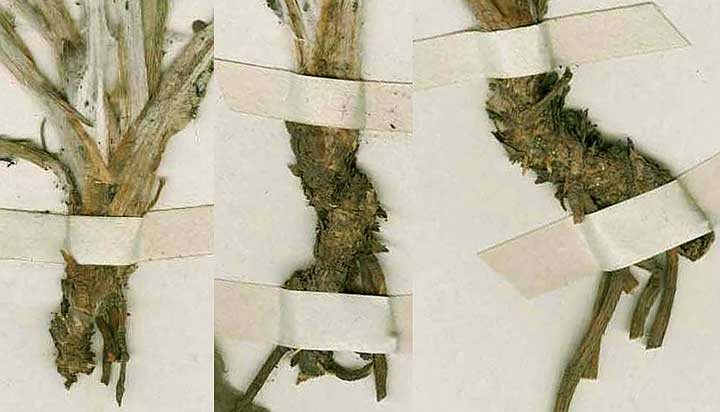
I was unable to find evidence to support the view that our Central Texas Chaptalia species have rhizomes. Correll & Johnston 1970 describe the genus (in Texas) as "subrhizomatous with abundant fibrous roots" (p. 1721). The key given by Nesom 1995 used the presence of rhizomes to distinguish C. nutans and C. texana (p. 157):
rhizome often absent; ... C. nutans
lateral rhizome present; ... C. texana

Some definitions of rhizome might seem appropriate here; e.g.,
www.biology-online.org/dictionary/Rhizome
A horizontal underground stem which can send out both shoots and roots ...
However, with our Chaptalia the 'stem' is not a specialized underground formation. It results from the extremely short internodes of the stem proper which become covered with surface debris and dirt as the prostrate leaf rosette ages. The common terms 'rooting at the internodes' and 'branching at the base' seem appropriate to describe what is going on here. Although at first glance the leftmost image below might seem to show a horizontal rhizome, significantly absent are roots and branches coming from the horizontal stem — simply an older stem (neither root nor rhizome). All three images illustrate the short internodes from which the leaves develop, their clasping bases later remaining as dark brown sheaths as they die. Not all internodes seem to produce roots. Branching stems were noted for only two C. texana plants; none for C. carduacea.

|

|

|
|---|---|---|
| C. texana |
C. carduacea Click to enlarge |
|